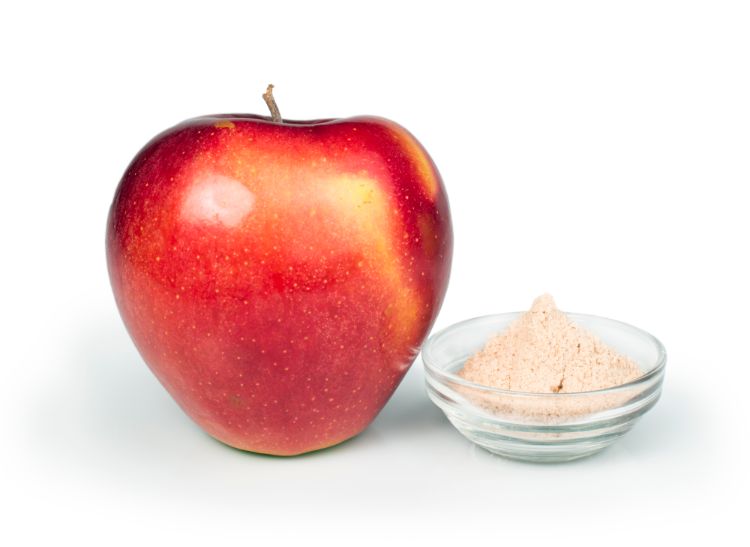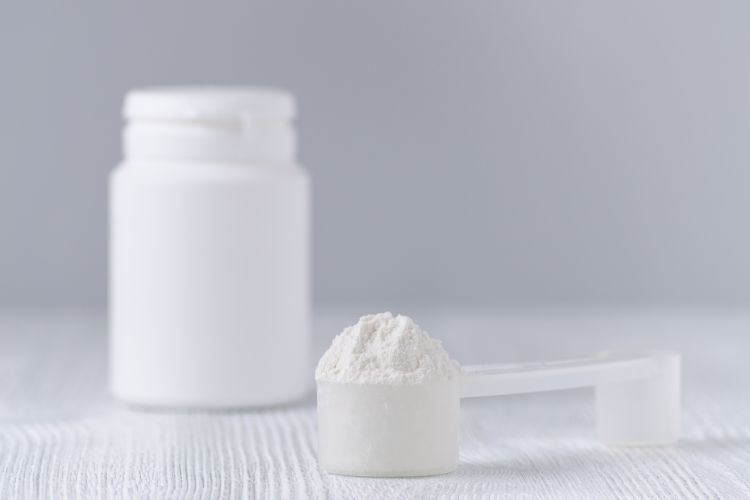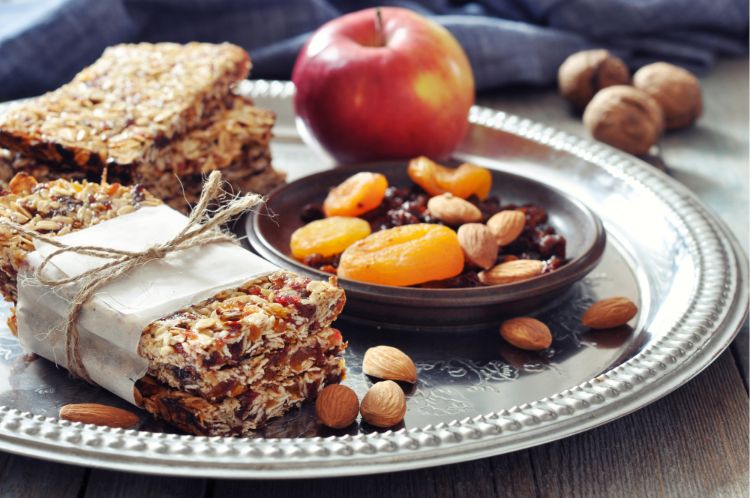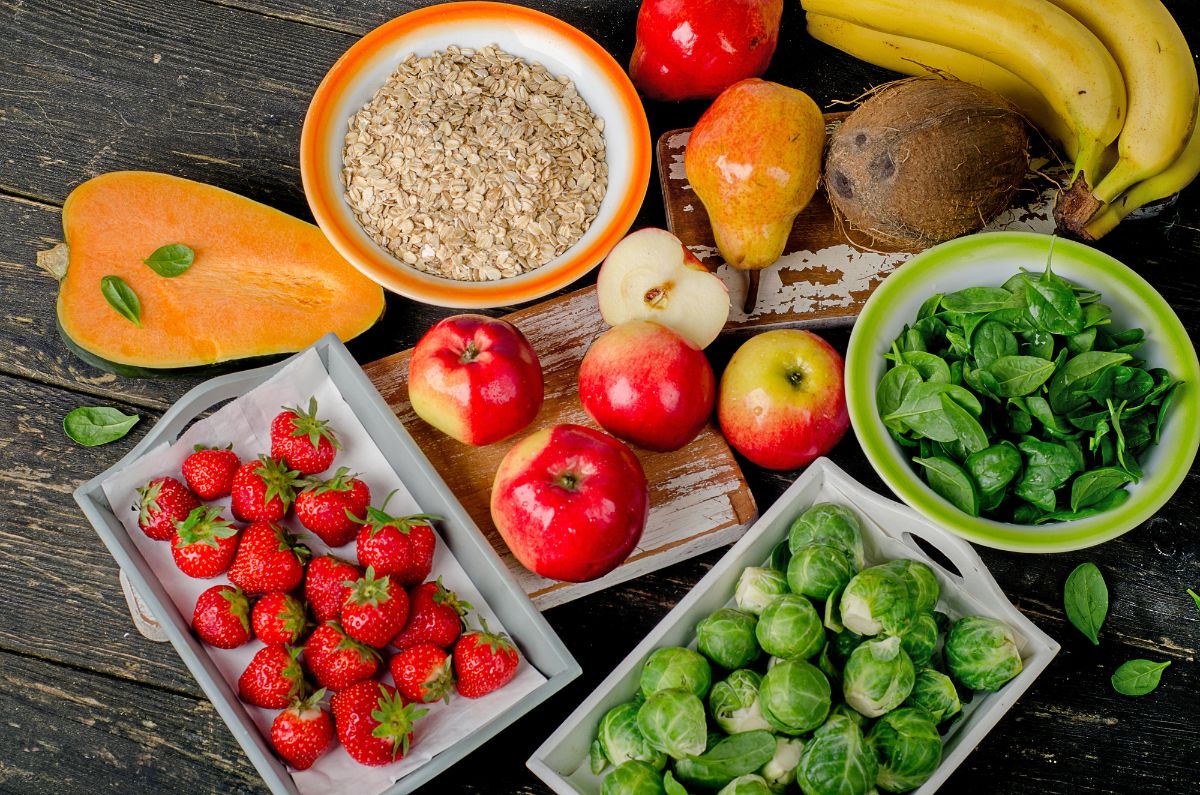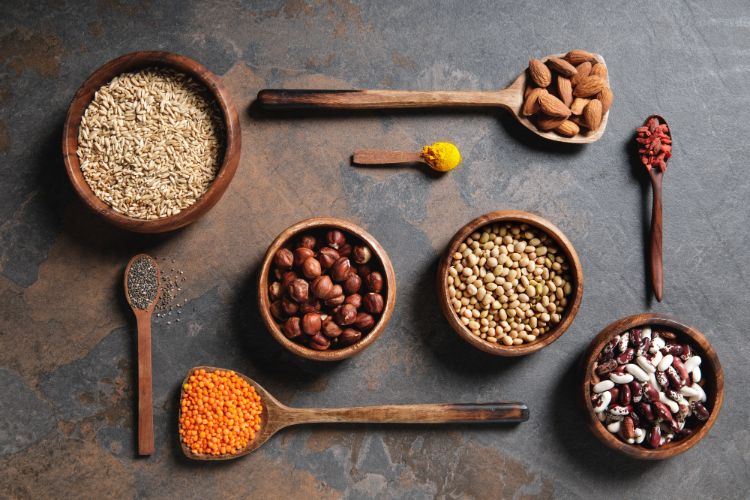Which foods contain pectin — Table
Pectin is a complex carbohydrate found in many plants (fruits, vegetables, berries) and industrial products (marshmallows, marshmallows, candies). In the food industry, pectin is produced mainly from apples and is noted as an E440 additive. It is used for the production of marmalade, marshmallows, jams, sweets and jelly products.
This substance belongs to the type Soluble fiber and has many useful properties: from Digestive improvements to reduce the risk of developing cancer and cardiovascular diseases.
7 useful properties of pectin we reviewed in the last article →
Below you will find a table with the foods that contain the most pectin.
Content in products (Table)
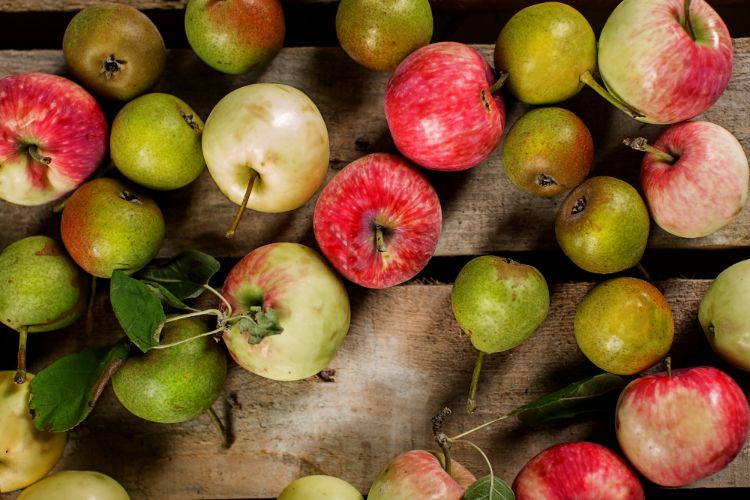
Many plants and industrial food products are rich in pectin. Let's look at each group separately.
Fruits
The high content of the substance is noted in familiar fruits.
| Name | Amount of pectin per 100 grams |
| Peaches | from 5 to 9 |
| Quince | from 5 to 9 |
| Apricots | from 4 to 9 |
| Apples | from 4.5 to 8 |
| Plums | from 3.5 to 5 |
| Pears | from 3.5 to 4 |
| Lemons | about 1 |
| Tangerines | about 1 |
| Oranges | up to 1 |
Vegetables
Vegetables are also rich in pectin. The leader in content is sugar beet – up to 20 g per 100 g of product.
| Name | Amount of substance per 100 grams |
| Sugar beet | from 7 to 20 |
| Radish | about 10 |
| Cucumbers | from 6 to 9 |
| Pepper | from 6 to 9 |
| Eggplant | from 5 to 9 |
| Pumpkin | from 3 to 9 |
| Carrots | about 7 |
| Green Peas | from 2.5 to 5 |
| Tomatoes | about 3 |
| White cabbage | up to 1 |
| Onion | about 0.6 |
Berries
Berries are an equally valuable source of pectin. They are often used to make jams and jellies, the level of pectin in which can be 2-5 times higher than in the original natural raw materials.
| Name | Amount of substance per 100 grams |
| Red currant | from 6 to 13 |
| Blackcurrant | from 6 to 11 |
| Strawberries | from 3 to 8 |
| Raspberry | from 3 to 7 |
| Cherries | from 2 to 4 |
| Grapes (all varieties) | about 1 |
| Cranberries | about 1 |
| Cherry plum | up to 1 |
Other products
Pectin can also be obtained from the following list of industrial products:
- Natural marmalade;
- Pastille (especially apple);
- Marshmallows;
- Fruit, berry or vegetable jellies;
- Turkish delight and other (similar in composition) national dishes of Oriental cuisine.
The presence of a substance in the composition of sweets is indicated by the food additive E440.
Daily allowance
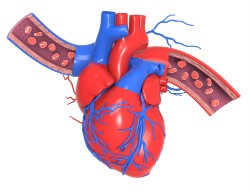 The average daily intake of pectin is 10-15 grams per day for adult men and women.
The average daily intake of pectin is 10-15 grams per day for adult men and women.
For people suffering from cardiovascular, endocrine (type II diabetes mellitus, obesity) and oncological diseases, as well as those with a high risk of vascular complications, it is recommended to increase the intake of the substance to 15-25 grams per day.
However, it is necessary to normalize the consumption of pectin in order to prevent the occurrence of adverse reactions.
Exceeding the recommended norm is fraught with the development of adverse reactions, the most common of which are: increased gas formation in the intestine, stool disorders such as diarrhea or constipation.
It is also necessary to take into account the likelihood of developing allergic reactions, which can occur not only when taking excessive doses of the substance, but also standard ones.
10 useful properties
 Pectin has a significant set of beneficial properties. The following are the main ones:
Pectin has a significant set of beneficial properties. The following are the main ones:
- Normalization of blood glucose levels. According to research data , the effect is provided by increasing the sensitivity of insulin receptors located on the cells of muscle and adipose tissue, as well as by slowing the absorption of nutrients in the digestive tract.
- Weight loss. Intake of soluble fiber leads to the rapid development of a feeling of satiety, which lasts up to 4 hours from the moment of eating foods with pectin. More about that, why fiber helps you lose weight , see in a separate article.
- Prevention of atherosclerosis. Pectin, according to scientists , contributes to the normalization of lipid profile parameters. It inhibits the production of LDL, VLDL and TAG (&171;harmful&187; cholesterol), reduces the concentration of total cholesterol. These substances are the leading risk factors for atherosclerotic vascular lesion with subsequent occlusion and formation of parietal thrombi. There is also an increase in HDL.
- Lowering blood pressure. Canadian scientists have proven that regular consumption of pectin reduces systolic and diastolic blood pressure, which improves the quality of life and prevents severe vascular abnormalities (stroke, myocardial infarction, etc.).
- Normalization of digestive processes. Pectin Improves digestion and normalizes intestinal microbiocenosis (destroys harmful bacteria and increases the number of representatives of beneficial microflora). It also effectively eliminates a number of dyspeptic disorders caused by various causes ( diarrhea , constipation , nausea, vomiting).
- Prevention of inflammatory bowel pathologies. Due to the complex effect on local immunity factors to normalize the course of digestive processes, inhibit chronic inflammation in the walls of the digestive tube, pectin reduces the likelihood of developing acute intestinal infections, as well as pathologies such as Crohn's disease and ulcerative colitis.
- Reduction of radiation exposure. Pectin is able to capture and remove substances with ionizing radiation from the lumen of the digestive tube. Similar results were obtained in the course of studies in Belarus.
- Inhibition of cancer cell proliferation. Proven that pectin reduces the risk of tumor metastasis, inhibits the growth and reproduction of malignant cells.
- Cleansing the body. In case of poisoning of any etiology (lead and salts of other heavy metals, bacterial toxins, etc.), it captures pathogenic particles, neutralizes them and removes them from the body
- Use in the composition of many medicines. A special role is assigned to the use of pectin in pharmaceuticals, since it has encapsulating and structure-forming properties that allow the delivery of individual drugs to the lower parts of the digestive tract.
Conclusion
Thus, pectin can be obtained from many plant products that are widely distributed and available in almost all regions of the globe. It is extremely important to normalize the consumption of this biologically active substance in order to avoid the appearance of undesirable reactions and get the maximum benefit.
